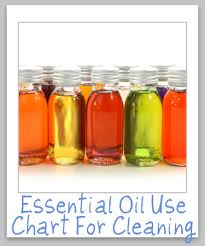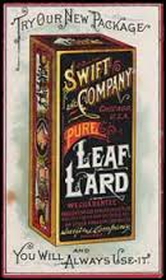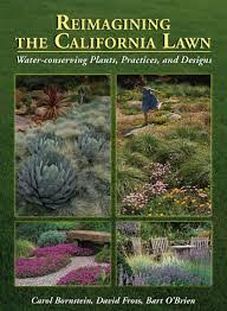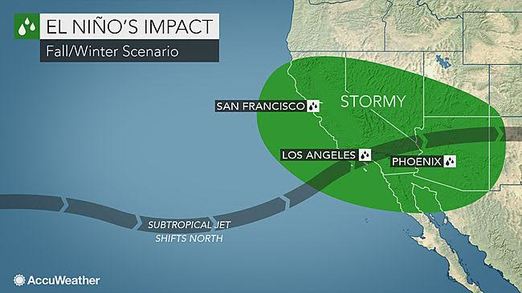 The business mogul has a reputation for making outlandish incendiary statements about immigrants and US immigration policy. In the statement posted on the network's website, NBC reiterated its commitment to "respect and dignity for all people" and cited "derogatory statements by Donald Trump regarding immigrants" as the primary reason for the termination of their business relationship. “Trump has been hosting “The Apprentice” since 2004. NBC introduced the concept of a celebrity edition in 2008, and it is the current iteration of the show. The Celebrity Apprentice aired Season 7 (or the series’ Season 14) in January,” they said. The derogatory racist remarks about Mexican immigrants came under scrutiny when he declared, “[Mexico is] sending people that have lots of problems, and they are bringing those problems to us. They are bringing drugs, and bringing crime, and their rapists.” Latino artists associated with Miss USA withdrew from the event and the Spanish-language network Univision decided to not air the pageant over Trump’s remarks. A grassroots campaign began on Change.org urging NBC to cut ties with the “Celebrity Apprentice” host and “Dump Trump.” Trump’s insensitivity to Mexicans casts a shadow also over his ability to govern all Americans—including all races--if he became president. First, however, he would have to receive the nomination and trust of the Republican Party, but after his disastrous announcement speech, he has little to no chance of ever getting the nomination. He is not the first presidential hopeful to be struck down by ill chosen words, and he probably won’t be the last. Resources http://www.ibtimes.com/donald-trump-fired-nbc-celebrity-apprentice-continue-without-host-1988499 http://hollywoodlife.com/2015/06/25/donald-trump-racist-remarks-running-for-president-inappropriate/
7 Comments
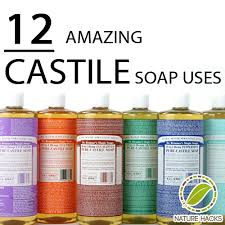 The researchers were assembled by the nongovernmental organization (NGO) "Getting to Know Cancer" to tackle longstanding theories and concerns over the relationship between combinations of commonly encountered chemicals and the development of cancer. Their findings were published in a special issue of the peer-reviewed journal, Carcinogenesis (23 June 2015). "We found definite evidence that chemicals that are unavoidable in the environment can produce a wide range of low-dose effects that are directly related to carcinogenesis. So the way we've been testing chemical safety is really quite out-of-date," said William Goodson III, a senior scientist at the California Pacific Medical Center in San Francisco. "Every day we are exposed to an environmental 'chemical soup' and we need testing to evaluate the effects of our ongoing exposure to the mixtures in this soup,” in report released in PR Newswire. According to current estimates researchers found that approximately one in five cancers may be due to chemical exposures in the environment that are not related to personal lifestyle choices. Additionally they conclude that the effects of exposures to mixtures of commonly encountered chemicals need to be better understood if we hope to reduce the frequency of cancer. The full study can be found here. "This is an area that merits considerable attention and where interdisciplinary and international collaboration is needed," said David Carpenter, director of the Institute for Health and the Environment of the University at Albany (a World Health Organization Collaborating Centre) and a project contributor in PR Newswire. "The science in this field is changing rapidly. Although we know a lot about the individual effects of chemicals, we know very little about the combined and additive effects of the many chemicals that we encounter every day in the air, in our water, and in our food." Are there alternatives to chemicals? Cleaning solutions are one of the offenders made with toxic chemicals. There are natural alternations available and some have been used for many years. The website Real Simple has assembled an extensive list of natural chemicals. The acid in lemon juice removes dirt and rust stains. It’s especially effective when mixed with salt, which makes “an excellent scouring paste,” says Karyn Siegel-Maier, author of The Naturally Clean Home. Some essential plant oils can kill bacteria and mold. Extracted from plants they are very strong, so you don’t need very much: One drop of peppermint oil is as potent as 30 cups of peppermint tea. Orange and lemon oil are also effective cleaners. Two ounces of water and 10 drops lavender or lemongrass oil to wipe grime off windows. Bonus: These oils could be mild repellent for flies. Castile soap is a fine, hard white or mottled soap made with olive oil and sodium hydroxide. It was developed as soap by the Romans in the first century. It can be used for everything from washing cars to scrubbing floors, tile, marble counter tops, sinks, showers etc. Borax has been used for years. When added to a laundry wash, borax makes detergents even more effective. It’s also “quite alkaline, so it kills mold and fungus and softens water,” says Robert Wolke, Ph.D., author of What Einstein Told His Cook: Kitchen Science Explained. Organic cosmetic labeling by USDA too strict for some companies Making the change to all natural cosmetics might be a bit more difficult because of the wide range of products that include strictly beautifying cosmetic make up to skin applications that claim to slow aging. The allure or promise by cosmetic companies to have the “fountain of youth” in their products maintains a loyal customer base. Also the eligibility for “organic” labeling is strict. Organic cosmetic labeling got a boost a few years ago from the nation’s largest natural products retailer: Whole Foods Market. In June 2010, Whole Foods Market announced that starting June 2011 all personal care and cosmetics product labels making an “organic” claim must be certified by the USDA NOP and all labels with the “made with organic ingredients” statement be certified by the NSF. As part of an effort to crack down on fraudulent organic label claims, Whole Foods will not sell cosmetics or personal care products with labels that say “organic” unless they have the USDA Organic seal or the NSF Personal Care seal, according to Quicklable.com. Cosmetics are eligible to receive the USDA Organic label seal under the National Organic Program (NOP), but the guidelines for this are extremely strict: a minimum of 95% of ingredients must be certified organic. Strict certification requirements that generally follow NOP standards such as: organic ingredients, materials, and production processes must be met. This is the same standard applied to organic foods, but it is considered very difficult to meet by personal care manufacturers, they said. Natural Cosmetics Labels and Personal Care Labels There are alternatives not certified organic but claim to be made of better for you ingredients—they don’t say “safer.” If you see the word “natural,” it’s made of renewable sources found in nature, but product does not contain petroleum products. Natural Standard for Personal Care Products, is a voluntary certification created by the Natural Products Association (NPA) back in 2008. A personal care product labeled “natural” along with a Natural Products Association (NPA) official seal it ensures the product is made with at least 95% all natural ingredients, ingredients that are all approved by the NPA. The following is the criteria for NPA Natural Personal Care Products: § Natural – any product labeled as “natural” should be made of natural ingredients (95%) and must be processed appropriately in order to keep its natural purity. § Safety – “natural” labeled products must avoid ingredients that pose any human health risk. § Responsibility – “natural” products should not be tested on animals § Sustainability – biodegradable ingredients and eco-friendly packaging should be used for “natural” labeled products. Searching out natural and safe alternative solutions to reduce the risk of exposure to carcinogens might seem daunting at first. But once the change to using Castile soap or lemon juice as a cleaning agent, it can become habitual. The same applies to cosmetics, although I do admit letting go of some favorite cosmetics might be more difficult. One company called 100% Pure claim to be the purest cosmetics in the world and all their cosmetics use fruit for pigmentation. If the change to naturals is done incrementally, it’s not as shocking or challenging to the rituals we have developed around the use of daily chemicals. And the payoff is a healthy non-toxic living environment. I am going to start with using Castile soap for floors and lavender and lemongrass oil for cleaning windows and shower doors. What small change can you make? Resources https://news.vice.com/article/these-combinations-of-everyday-chemicals-could-cause-cancer http://www.ibtimes.com/everyday-chemicals-may-trigger-cancer-when-combined-body-study-1981115 http://www.prnewswire.com/news-releases/study-mixtures-of-common-chemicals-may-increase-cancer-risk-300103394.html
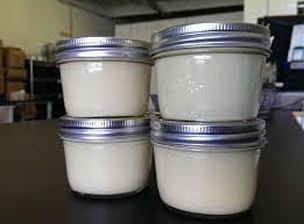 Home rendered leaf lard Home rendered leaf lard Pivoting to the use of lard actually started a few years ago. And a cookbook, "Lard: The Lost Art of Cooking with Your Grandmother's Secret Ingredient", lead the way making the case that lemon nut cookies and buttermilk pound cake made with lard tastes good. Published by “Grit magazine: Rural American Know How,” the book describes the rediscovery of lard as it becomes new normal for home cooks. They even went as far in the book to suggest lard might be good for you, or at least not as bad for you as other stuff, according to a report in 2012 by NPR. According to lipid chemist from Iowa State University Tong Wang, lard is healthier than hydrogenated shortening like Crisco, but not as healthy as unsaturated omega-3 oils like olive oil. Wang cautioned if lard is consumed in moderation, it’s fine. Replacing healthy oils with lard as a common alternative is a bad idea. There are healthy oil alternatives to using trans-fats: Oil from olives, peanuts, grape seeds, and walnuts to mention a few. Learning to cook with the variety of oils is not only healthier but also expands the cook’s resources to add complexity and taste. Will the J.M. Smucker Company, producers of Crisco, begin diversifying to leaf lard? First introduced in 1911 by Procter & Gamble, Crisco was the first shortening to be made entirely of vegetable oil. R.J. Reynolds tobacco company saw the writing on the wall in 1964 when Luther L. Terry, M.D., Surgeon General of the U.S. Public Health Service, released the first report of the Surgeon General's Advisory Committee on Smoking and Health. The cigarette producing giant diverted to non-tobacco businesses. Smucker is already mainly a food producer and supplier, so the change would not be as radical, but it will be interesting to see if they decide to make the switch to leaf lard to maintain customer base. There is a possibility that Smucher could follow what corporations like the Swiss company Nestles and tobacco corporations have done and create an international customer base in foreign countries to sell their products not allowed or discouraged in the US. For now home cooks will have almost three years to pivot to leaf lard, and as the demand increases stores should start stocking it. Right now leaf lard is difficult to find, although regular lard is a common item. Resources http://www.nytimes.com/2015/06/24/opinion/the-trans-fats-that-wont-leave.html?ref=todayspaper&_r=0 http://www.npr.org/sections/thesalt/2012/05/02/151868208/lard-is-back-in-the-larder-but-hold-the-health-claims http://www.grit.com/
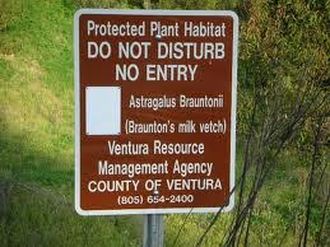 “It was the best year for wildflowers that many of us have ever seen on Mount Diablo. A once-in-a-generation experience,” they said. UC Davis Professor of Environmental Science and Policy and main author of the years’ long study Susan Harrison says, “Fifteen years ago, you had just these wonderful wildflower years. The good years aren’t quite as good anymore and the good years aren’t as frequent anymore.” In the future, university research will be focusing on scenarios that might play out as the diversity of wildflowers is compromised because of drought conditions and climate change. Dormant seedlings sprout in rainfall, but die back before reaching maturity without continued rain; therefore, the production of new seeds is hindered or even non-existent. At stake is the “diversity” of California’s native plants, Harrison said. “Diversity is a term for the number of species.” Without diversity, she said, California plant populations would become “a monoculture,” Harrison said. Monoculture is the cultivation or existence of one species. “Our study shows that 15 years of warmer and drier winters are creating a direct loss of native wildflowers in some of California’s grasslands.” Such diversity losses may foreshadow larger-scale extinctions, especially in regions that are becoming increasingly dry,” she said. The researchers confirm that drought-intolerant species suffered the worst declines. The California Native Plant Society’s executive director Dan Gluesenkamp commented on the study in terms of the wide range of ecosystems and how wildflowers behave differently in each of them saying, “In California, variability is the norm,” he said. “They [UC Davis] have 15 years of data. … For California grassland, that’s not a lot of time.” “Gluesenkamp, whose organization has roughly 10,000 paying members, said the best way to protect California native plants is to identify which plants are threatened and set aside habitat for them in trusts and parks. He also called for more native plant restoration.” “I wouldn’t worry about the sky falling because of climate change,” he said. “But keep watching,” in the Sacramento Bee report. Global food chains negatively affected Despite claims by climate change deniers, the repercussions from climate change and drought reach not only in California but also to Mediterranean environments like southern Europe signaling greater awareness of the connection between extreme weather patterns in semi-arid regions around the globe. Researchers believe future grassland communities of California and beyond will be less productive, provide less nutrition to herbivores, and become more vulnerable to invasion by exotic non-natives, the study says. Preserving native wildflowers in grasslands has effects beyond the aesthetic. University researchers expect the negative effects to cascade up through the food web—affecting insects, seed-eating rodents, birds, deer, and domesticated species like cattle, all of which rely on grasslands for food. Seed banks could be the answer—maybe if we act now The study provided some hope for saving wildflowers in grasslands during the current drying period through their extensive seed banks. Seeds can be dormant for decades waiting for the right conditions to germinate. Heirloom seeds have been discovered after being dormant for years. Some predictions, however, warn California’s drought will intensify in the next decades which could make some attempts to rescue native species as being too late for some species. Seed banks are preparing for the worst case future scenarios. There are approximately 400,000 known species, and the Millennium Seed Bank aims to conserve 25 percent in the form of seeds by 2020. The seed bank is located on the grounds of Britain’s Royal Botanical Gardens, which were constructed by King Henry VII and are now considered a UNESCO World Heritage Site. Focused on conserving seeds from plants that can be used for food production, the Millennium Seed Bank currently holds seeds from over 10 percent of all plant species. As the connection between ensuring the world food chain by protecting native plants species is discovered, seed banks everywhere should consider saving a variety of seeds including those obtained from wildflowers. Resources http://www.sacbee.com/news/state/california/water-and-drought/article25204135.html http://www.futurity.org/wildflowers-california-947712/ http://blogs.worldwatch.org/five-global-seed-banks-that-are-protecting-biodiversity
 Additionally, medical devices that can be worn are a growing industry and expected to be $8 billion by 2018—because everyone benefits from them. “Caretakers get some much-needed peace of mind that aging family members will always be under a watchful eye; seniors surrender their privacy but, in many cases, hold on to the independence that comes with staying out of assisted-living facilities,” according to the report. DNA tests provide valuable data A growing number of people, perhaps millions, are willing to give up DNA information to discover valuable information about medical predispositions. In 2013 the Federal Drug Administration stopped personal genetics testing service. Currently the government approves targeted, direct-to-consumer genetic test for Bloom Syndrome, which is an inherited disorder that predisposes those with the marker at increased risk for cancer. Genentech is launching a new drug development division, directed at creating new drugs to fight genetic disorders, and have partnered with 23andMe and Pfizer to study Parkinson’s and Lupus. “While the data is anonymous, the research wouldn’t be possible if people hadn’t agreed to expose themselves to technology in new ways—and entrust their most personal health information to a company. 23andMe says 80 percent of its more than 950,000 customers have agreed to donate their DNA information for the purpose of medical research,” they said. Employees wear mobile devices to measure performance Employers are eager to have full surveillance of employees, and the benefits for workers are subtle and in some cases rewarding for those employees who recognize the positive aspects and maximize the benefits. The data collected from employees wearing surveillance devices include relationships with co-workers, job performance, daily habits of exercise and diet—all of which benefit the employer as they seek to improve productivity and cut costs. Employees can benefit as well from workplace monitoring and even substantiate raises and promotions by performance assessments derived from the monitoring. “Wellness programs, too, are emerging with tangible personal benefits: At British Petroleum, U.S. employees who wear company-supplied Fitbits have a chance at lowering their insurance premiums for themselves and their dependents,” according to the report. The logical question for employees is can they trust employers with the information? Some believe a “moral renaissance” in business will dawn a new and improved corporate benevolence driven by ethical management purported by bestselling business consultant Gary Hamel. Proof of this concept will require a track record of trust among participants, which could take years of statistical analysis. In the future giving up privacy will need to be balanced and assessed on a case by case basis to facilitate informed privacy decision making. One thing is certain, however, if a surveillance device or DNA test involves the knowledgeable of a second or even third party of the information, all those participating need to not only be aware of the benefits, but also the risks. Confidentiality guaranteed through contractual methods will become even more important as science and technology become omnipotent in our daily lives. Resource http://www.wired.com/2015/06/3-privacy-tradeoffs-might-worth it  Lake Shasta reveals low water reserves Lake Shasta reveals low water reserves California water wars among cities, farmers, salmon conservation The California drought is in its fourth year, and tensions are mounting in many cities where water is scarce. Mountain House, California together with 113 areas with senior water rights face the possibility of having their water supply cut. The state water-access rights established as far back as 1903 are being suspended. Mountain House is searching for alternative water sources before the city of 14,000 is left high and dry. According to the Public Policy Institute, statewide average water use is roughly 50% environmental, 40% agricultural and 10% urban. However, the percentage of water use by sector varies dramatically across regions between wet and dry years. The tensions center mainly on the disparity between agricultural use and what cities and homeowners use. Approximately nine million acres of farmland in California are irrigated, representing roughly 80% of all human water use. This week the conflict between the two groups escalated when a consortium of mostly urban water districts filed a complaint alleging Delta farmers are stealing water, according to a report in the Sacramento Bee. The urban group of 27 agencies, including the Metropolitan Water District of Southern California, said farmers in the Sacramento-San Joaquin Delta put water quality at risk by diverting more water than is within their rights. The consortium, called the State Water Contractors, and made the filing with the State Water Resources Control Board. “These landowners in the Delta have long-standing water rights that entitle them to water when nature provides it – but those rights do not entitle them to stored water paid for by others and intended for the environment,” said Stefanie Morris, acting general manager of the contractors group. “If nature ran its course, the Delta would not be suitable for drinking or farming this summer,” they said in the report. Dante John Nomellini, who represents the Central Delta Water Agency, said the complaint amounts to the water agencies “playing a game.” His district serves about 120,000 acres in the heart of the Delta. “When it comes down to us, they claim we’re taking their stored water,” he said. “Well, it’s commingled with our water. And the law is clear when you commingle your water with somebody else’s you cannot deprive them of the water to which they’re entitled ...” Protecting California salmon State and federal officials stated they will continue to restrict water flows out of Lake Shasta to protect endangered salmon. Shasta is the largest reservoir in the Central Valley Project, which is the federal network pumping water to the entire state. The current temperatures in Shasta are warmer than expected because of low levels which are also keeping the water release on hold. The California State Water Resources Control Board manages and regulates the release of water from state and federal projects, dams and reservoirs in order to keep stream temperatures cool enough for Chinook salmon to spawn. In an unfortunate release in 2014 from Lake Shasta the water was too warm and caused a die off of incubating salmon eggs in the upper Sacramento River; therefore, steps are being taken to prevent another occurrence. Fall El Niño could bring rain El Niño occurs when ocean water temperatures climb above average across the central and eastern Pacific, centered on the equator. “The warmer sea surface water strengthens the storm track over the Pacific Ocean and across the southern United States, especially during the winter, spring and autumn months of the year," reported by Accuweather.com. El Nino brought relief to the Texas drought; therefore, meteorologists are pondering whether the same phenomenon will provide relief for California this fall. Early predictions indicate the current El Niño pattern will strengthen and peak sometime in the autumn of 2015. "If this is the case, then California has a good chance at being pretty wet for the upcoming winter. Conversely, if El Niño peaks at moderate level or weakens by early fall, it becomes more dicey in terms of storms and rainfall for California,” they said. The El Niño of the winter of 1997-98 was one of the strongest on record and delivered storm after storm to California. The storms unloaded 20-30 inches of rain in California with yards of snow in the Sierra Nevada. This would be exactly what California needs; however, water restrictions and conservation should remain the new normal in the state. The future of water in California can no longer rely on rainfall and snowpack to supply the growing agricultural needs of the state. Resources http://www.sacbee.com/news/state/california/water-and-drought/article24683440.html#storylink=cpy http://www.ppic.org/main/publication_show.asp?i=1108 http://www.capradio.org/50298 http://www.accuweather.com/en/weather-news/could-el-nino-help-bust-califo/47878546
|
Dava Castillo
is retired and lives in Clearlake, California. She has three grown
children and one grandson and a Bachelor’s degree in Health Services
Administration from St. Mary’s College in Moraga California. On the
home front Dava enjoys time with her family, reading, gardening, cooking
and sewing. Archives
November 2015
|

